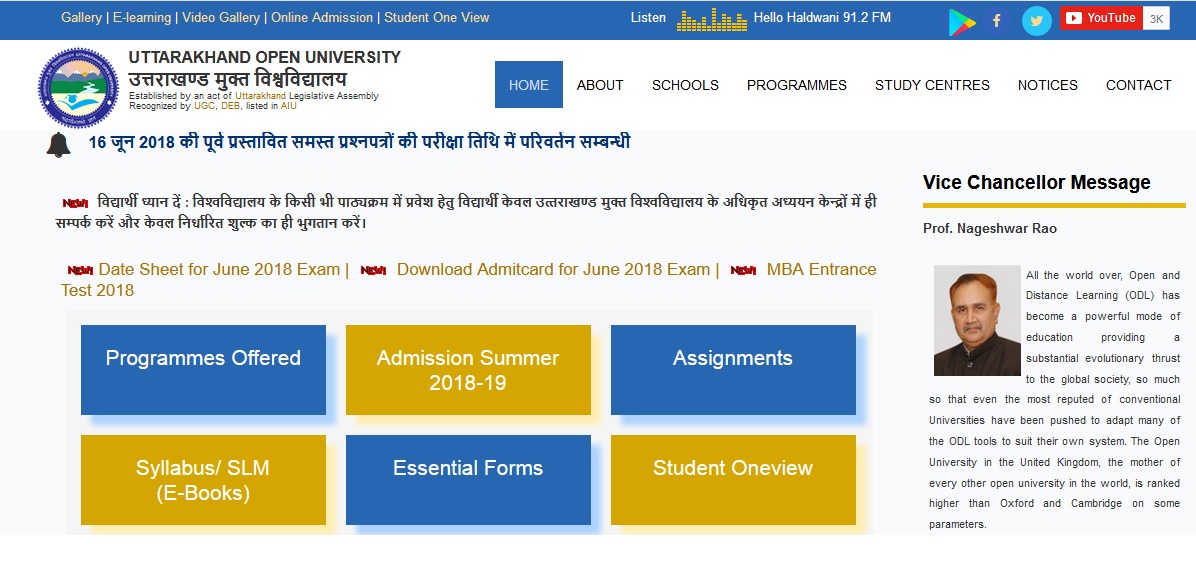MAEC08 Regional Economic Development & Planning M.A Question Bank : uou.ac.in
Name of the University : Uttarakhand Open University
Degree : M.A
Department : Economics
Subject Code/Name : MAEC08 Regional Economic Development and Planning
Year : II
Document Type : Old Question Papers
Website : uou.ac.in
Download Model/Sample Question Paper : https://www.pdfquestion.in/uploads/uou.ac.in/4433.-MAEC-08%281%29.pdf
UOU Regional Economic Development & Planning
MAEC.-10 (M.A. Economics)
Second Year, Examination 2012
Time : 3 Hours
Related : Uttarakhand Open University MAEC04 Quantitative Method M.A Question Bank : www.pdfquestion.in/4432.html
Note : The question paper is divided into three sections ‘A’ ‘B’ and ‘C’. Attempt questions of each section according to given instructions.
Section A
Long Answer Questions
Note : Answer any two questions. Each question carries 15 marks
Q.1 What do you understand by Regional Economic Development? Discuss.
Q.2 Do you think regional development plans have been successful in India? Explain.
Q.3 Evaluate the theories of Hiresman and Myrdal with regard to regional development.
Q.4 Explain the concept of multistage planning.

Section B : Short Answer Questions
Note : Answer any four questions. Each question carries 05 marks 5X4=20
Q.1 Explain the principles of localization.
Q.2 Does industrial development lead to regional infrastructural change? Explain.
Q.3 How do regional disparities affect the economic development?
Q.4 What do you mean by Industrial complex? Explain.
Q.5 How do natural resources make a particular region ‘Special’?
Q.6 Do you agree with the statement that ‘A variety of instruments ranging from direct attacks on poverty and unemployment and asset in equality to more indirect fiscal and other measures are required to reduce inequalities of income & wealth’.
Q.7 The main focus of balanced regional development started from India’s Third Five Year Plan’. Explain.
Q.8 Explain the concept of regional economic model.
Section C : Objective Questions
Note : Answer all questions. Each question carries 01 mark. 1X10=10
Write true or false against the following;
Q.1 Input-Output Analysis has been used for the first time by Professor Leontief in 1951.
Q.2 Professor J.R. Hicks, defines an input as “something which is bought for the enterprise.”
Q.3 Cost Benefit Analysis describes and quantifies the social advantages and disadvantages of a policy in terms of common monetary units.
Q.4 The Second Five Year Plan in India was based on the four sector Mahalanobis model.
Q.5 Regional development plans are important.
Choose the correct alternative :
Q.6 ‘Planning may be defined conscious and deliberate choice of economic priorities by some public authority.’ The above statement has been given by
a. Adam Smith
b. Marshall
c. Pigor
d. Smt. Barbara Wootan
Q.7 Role of agricultural in economic development lies in
a. Increasing the production of food
b. For industrial development
c. Expansion of tertiary sector
d. Increase in employment i. All the above ii. None of the above
Q.8 Theory of circular causation is given by
a. Keynes
b. Clark
c. Schumpeter
d. Myrdal
Q.9 For the first time use of Cost-Benefit Analysis in India was made by
a. D.R. Gadgil
b. K.N. Raj
c. Ram Narain
d. A.S. Charan
Q.10 The idea of regional development originated with
a. Stalin
b. Myrdal
c. Adam Smith
d. Pigou
Second Year, Examination-2015 :
MAEC-08 :
Section – A : (Long Answer Type Questions)
Note : Section ‘A’ contains four (04) long-answer-type questions of fifteen (15) marks each. Learners are required to answer any two (02) questions only. (2×15=30)
1. Critically discuss Sargeant Florence’s Inductive theory of industrial location.
2. Critically examine Hirshman’s theory of unbalanced economic growth and discuss its suitability for under developed countries.
3. Give a short review of the industrial progress of India during the planned economic development.
4. Evaluate the importance and limitations of Regional Planning of India.
Section – B : (Short Answer Type Questions)
Note : Section ‘B’ contains eight (08) short-answer-type questions of five (05) marks each. Learners are required to answer any four (04) questions only. (4×5=20)
1. Clarify characteristics of monopolitic competition.
2. Clarify Alfred Weber’s theory of industrial location.
3. Clarify economies and diseconomies of centralisation.
4. Explain industrial complex analysis.
5. Evaluate the gravitational model.